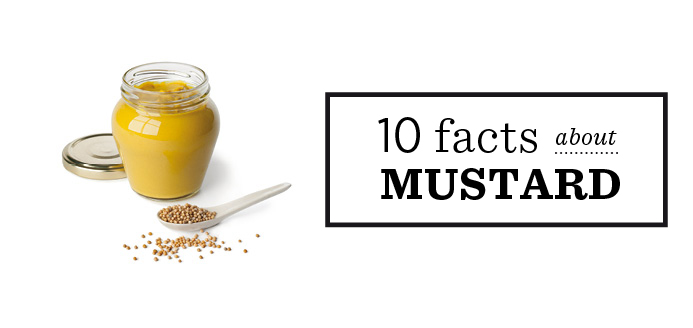1. Did you know?
Canada is by far the world’s largest mustard seed exporter. Saskatchewan alone produces nearly half of the mustard consumed on five continents. Canada produces three kinds of mustard: yellow, brown and oriental, a spicy variety for the Asian market.
2. Popular, yellow mustard
It is exported mainly to the United States for the production of regular mild mustard. Turmeric is added to give it that bright yellow colour. A must-have condiment for hotdogs and hamburgers, sales of yellow mustard were affected by the Major League Baseball strike in 1994!
3. Dijon mustard
Brown Canadian mustard is exported mainly to Europe to produce the famous Dijon mustard. Since 1937, this term no longer applies to the region, but to the recipe. It guarantees that dry extract content from mustard seeds will make up at least 22% of the weight of the end product, but does not guarantee the place of manufacture.
4. Old-fashioned
Meaux mustard, also called old-fashioned, is milder than Dijon. It is distinguished by coarsely ground seeds that leave brown and yellow particles visible.
5. Mustard salad
Mustard is a cruciferous vegetable, related to radish, cabbage and watercress. Its seeds are used as a spice, just like pepper, and it is also made into a condiment. Its leaves have a strong flavour and can be eaten raw or cooked, like spinach. Very green and rich in iron, it is an excellent source of vitamins A, C and K.
6. Prepared mustard
Mustard seeds are macerated in liquid (wine, vinegar, water, must…) with salt, and then ground, sieved and reduced to paste. Prepared mustard can be flavoured with herbs, spices, cheese, alcohol, fruit…
7. Creamy vinaigrette
Adding mustard helps to stabilize your basic vinaigrette, approx. 15 ml (1 tbsp.) of mustard for every 125 ml (½ cup) of vinaigrette.
8. Open bottle
Mustard keeps for 18 months if stored in an air-tight container out of the light. Even though some keep it in the fridge, you can store mustard in the pantry. A pleasant, slightly spicy smell should be released when you open the bottle. Signs of deterioration include the smell of eggs and a brown colour.
9. Save calories
One tablespoon of mustard contains only 10 calories, compared to 40 for mayonnaise.
10. Mayo with a kick
Mix 125 ml (½ cup) of mayonnaise with 10 ml (2 tsp.) of Dijon mustard and 2.5 ml (½ tsp.) of curry powder. This spread is perfect for meat, fondue bourguignonne or to liven up a chicken sandwich.

